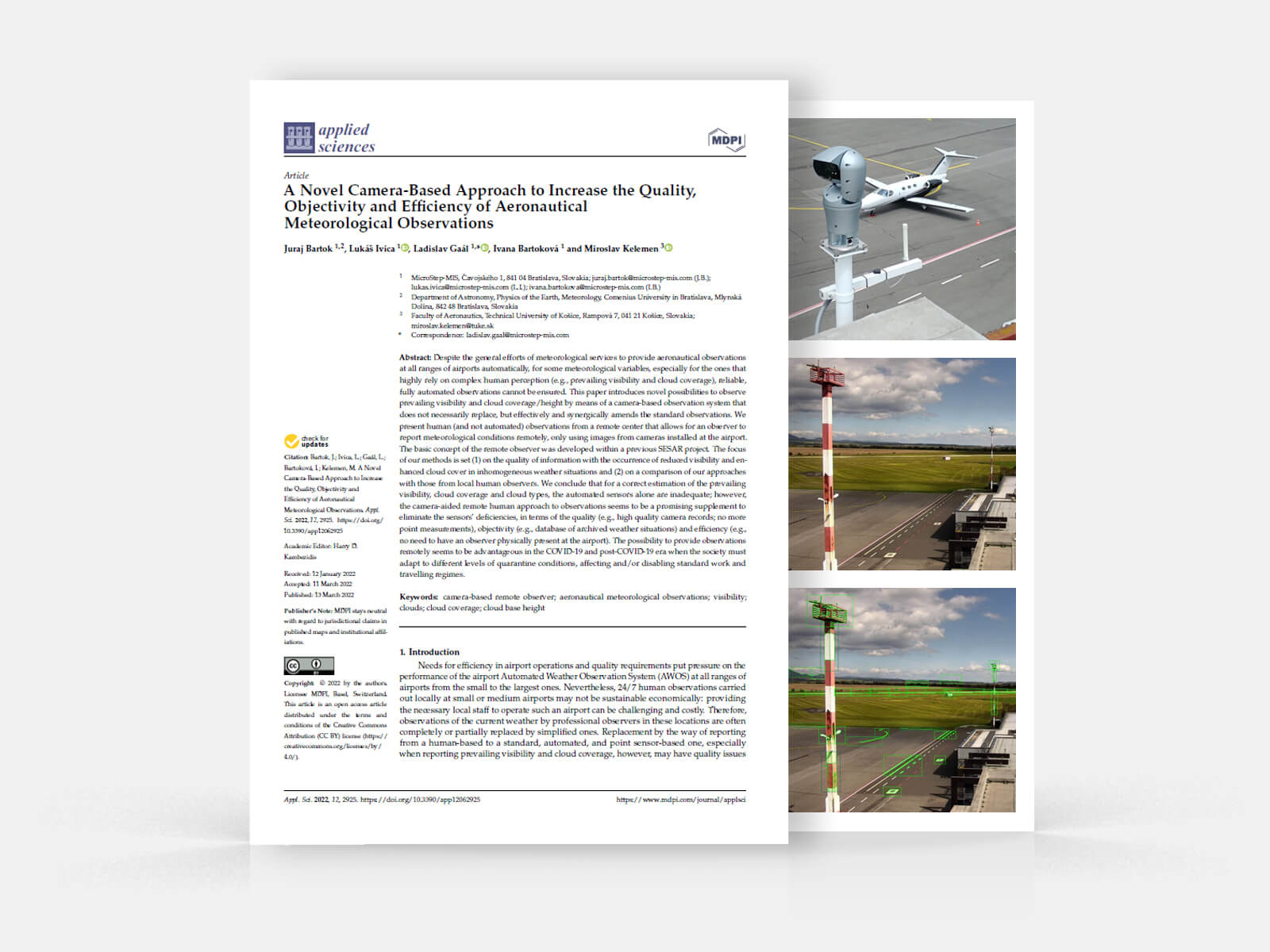Despite the general efforts of meteorological services to provide aeronautical observations automatically, for some meteorological variables, especially for the ones that highly rely on complex human perception, such as prevailing visibility and cloud coverage, reliable, fully automated observations cannot be ensured. We conducted research in this area, the findings of which were published in A Novel Camera-Based Approach to Increase the Quality, Objectivity, and Efficiency of Aeronautical Meteorological Observations.
The paper focuses on problems related to the automated observation of some meteorological variables, namely prevailing visibility and cloud coverage/height. The standard observation of these variables is based on complex human perception, and therefore, their automated, and point sensor-based measurement is often accompanied by quality issues.
The paper introduces novel possibilities to observe prevailing visibility and cloud coverage/height by means of a camera-based observation system (“remote observer”) that does not necessarily replace, but effectively and synergically amends the standard observations.
The validation experiments confirmed our hypotheses related to the examined approaches to the observation. The remote observer approach showed better performance than the standard automatic weather observation system, and, at the same time, the performance of the remote observer approach was comparable to local observations, to estimate cloud base height, cloud coverage, and prevailing visibility. The case studies demonstrated that the automated sensors do suffer from shortcomings in certain, predominantly spatially inhomogeneous meteorological situations. For a correct estimation of the prevailing visibility, cloud coverage, and cloud types, these sensors alone are inadequate; however, the camera-based remote approach to observations seems to be a promising supplement to eliminate the sensors’ deficiencies, in the terms of
- Quality | The proposed solution makes use of high-quality camera records to determine visibility and the possible presence of dangerous cloud types, and high quality ‘stitched’ image of the full hemisphere to determine the cloud coverage. The estimation of the given meteorological variables is no more a point-based one.
- Objectivity | The remote method of observation offers a number of annotated markers to determine visibility, and a mesh grid of concentric circles to determine cloud coverage in an objective way. The records of the weather situations are instantaneously archived in a database, and thus, they can be repeatedly double-checked at any time.
- Efficiency | Having the proposed remote observing systems installed, the physical presence of an observer at the site of interest is not necessary. The observer can estimate the meteorological variables from a centralized office effectively, even for a number of target sites. This option is particularly useful in the COVID and post-COVID conditions.
It is not meant that the proposed remote observation methods should entirely replace the existing sensors. Instead, a combination of the standard and the novel methods would result in synergies that would bring benefits for all the parties involved in providing higher quality aeronautical services.
Our experience to date confirms the knowledge that remote access will allow more efficient use of available human resources, improve employee workload management, and improve work organization up. The proposed solution has the potential to improve meteorologists’ decision-making processes and reduces the scope for human error and subjective data evaluation. Finally, it may enable more efficient use of funds for the provision of this service for professional staff, but also for the necessary infrastructure.
Read the full article here.
____________________
As a certified scientific research organization, we actively contribute to a number of internal and external research programs and activities, the results of which are being published in scientific journals with the highest level of scientific recognition, and implemented in our production processes. Learn more about our research activities here.
